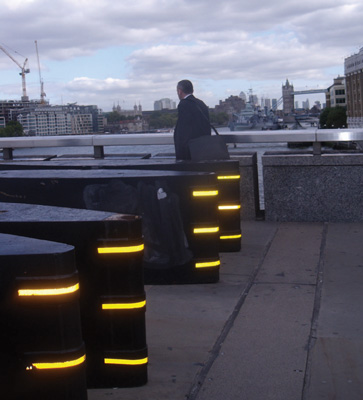The London bridge terror attack of June 2017 came after a similar hired ‘vehicle as a weapon’ attack on Westminster Bridge of March 22, 2017.
‘There was no form of physical protective security on London Bridge, despite the fact it was a location which was particularly vulnerable to a terrorist attack using a vehicle -as-a-weapon. There were weaknesses in systems for assessing the need for such measures on the bridge and implementing them promptly. Absent such weaknesses, suitable hostile vehicle mitigation measures may have been present.’
So said the chief coroner, His Honour Judge Mark Lucraft QC, towards the end of the inquest when he gave verdicts on two of the victims of the Saturday evening, June 3, 2017 attack. The inquest heard that Borough Market was only a tier three site in terms of ‘crowded places’, tier one being the most symbolic, most attended or high profile. The authorities did not have any specific intelligence after the Westminster Bridge attack of a further threat to a London bridge. Attacks on the Continent – such as in Nice and Berlin – had been against city centre events. Likewise the May 2017 attack on Manchester Arena had been against a concert event.
The City of London Corporation is responsible for the bridge itself; Transport for London (TfL), the transport body, is responsible for the roadway. The City of London Police commissioned a private company, Cerastes, to do ‘friendly hostile reconnaissance’, months before. Their second report, received weeks before the attack, did identify London Bridge (among others) as ‘an attractive location for a terrorist attack’, and the very methods used by the June 3 terrorists. Police likewise picked up the attractiveness (to a vehicle as a weapon terrorist wanting to do a ‘low sophisticated’ attack) of London Bridge; it was half a kilometre along, with little street furniture, and day and night might have ‘a large footfall’.
Likewise it occurred to the public; the inquest heard that after the Westminster attack, on a public online forum TfL was asked about the threat to London Bridge. TfL told the inquest that if it had been told that police ‘considered London Bridge to be one of the two locations in the Square Mile most susceptible to low sophistication attack’ – the inquest was not told what the other location was – TfL could and would have put in vehicle restraining barriers and street furniture, ‘within weeks’.
City of London Police told the inquest that more Servator-style deployments had gone on in London Bridge than any other place in the City. To recap, Servator is the police method of deploying ‘flash’ patrols, aiming to disrupt hostile reconnaissance and other criminals at unpredictable (to the criminal) times. Could the National Barrier Asset have been used before June 3? Police told the inquest not; ‘there was no fast time solution’. At once after the attack, the authorities decided to install ‘hostile vehicle mitigation’ on eight London bridges, and temporary barriers – from the National Barrier Asset – were in position within six days.
As one of the barristers on day 30 of the inquest put it in a question to a senior City of London Police officer; will police ‘only take swift action after the horse has bolted’, after an attack? The reply was a denial; ‘had there been any intelligence around this particular location, clearly it would have been considered completely different’.
The inquest also heard from the security services, and the coroner recorded that ‘multiple warning signs about the extremist views and conduct of one attacker were known to a number of his close family members’, for years, but in the main were not reported to the authorities.
For the inquest transcripts in full visit https://londonbridgeinquests.independent.gov.uk/.










